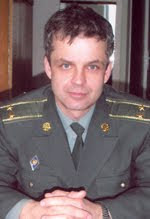The Kalinin K-7 was a heavy experimental aircraft built and
tested in the Soviet Union in the early 1930s. It was named after Soviet aircraft designer Konstantin
Alekseevich Kalinin (1889 – 1938). The K-7 was
one of the biggest aircraft built before the jet age. It had an unusual
arrangement of six tractor engines on the wing leading edge. In civil transport
configuration, it would have had a capacity for 120 passengers and 7,000 kg of mail. The K-7 was built in two years at Kharkiv
starting in 1931. The K-7 first flew on 11 August 1933. The very brief first
flight showed instability and serious vibration caused by the airframe resonating
with the engine frequency. The solution to this was thought to be to shorten
and strengthen the tail booms, little being known then about the natural
frequencies of structures and their response to vibration. The aircraft
completed seven test flights before a crash due to structural failure of one of
the tail booms on 21 November 1933. The existence of the aircraft had only
recently been announced by Pravda which declared it was "victory of the
utmost political importance" since it had been built with steel produced
in the USSR rather than imported (mostly from Sweden). Kalinin was executed as
an enemy of the state in 1938 during the Stalinist purges. One of attached pictures were taken in Kharkiv early 1930s, and the third one is just a computer model created to show what the term of "flying fortrass" was assosiated with many decades ago.









